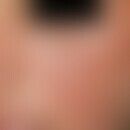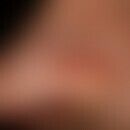DefinitionThis section has been translated automatically.
Reflex zone massages belong to the controversial alternative medical treatment forms and are supposed to complement treatments in pain therapy and for circulatory disorders, and they are also supposed to promote general well-being. The procedure is also used in the wellness industry.
All reflex zone massages are based on the idea that there are different, also different localized "reflex zones" on the skin, in which all organs and muscle groups of the body "project" themselves on the skin surface and in the skin-subcutaneous area like in a burning glass. Reflex zones on the back, on the sole of the foot (sole reflex zone), on the hand, on the ear, on the nose and on the head are assumed. Representatives of this alternative medical theory postulate that the reflex zones can be used either diagnostically in the context of a diagnostic finding or therapeutically (reflex zone massage, acupuncture and acupressure). Note: the reflex zones are not identical with the head's zones.
It is assumed that reflex zone massages are used in pain therapy and for circulatory disorders to complement common medical procedures and physiotherapeutic applications. There is no valid scientific evidence for a positive effect of reflexology. In the EU, there are an estimated 25,600 providers of reflex zone massage.
There is no valid scientific evidence of a positive effect of reflexology. In the EU, there are an estimated 25,600 providers of reflex zone massages!
ImplementationThis section has been translated automatically.
The treatment time is based on guidelines. From a medical point of view, the treatment time is initially 15 minutes, but can be as long as 30 or 40 minutes.
Note(s)This section has been translated automatically.
History: In 1860, Metzger was the first to describe the long-distance effect of massages on the internal organs. At the beginning of the 20th century, Cornelius introduced nerve point massage, which is also supposed to have an effect on the internal organs via a reflex path. A further development was made by Müller, who developed the "hard tension massage" and by Hartmann, who also described the reflective effects of massages. The term reflexology massage was introduced into medicine by Kohlrausch.
Basics: Kohlrausch contributed significantly to the basics and understanding of reflex zone massages by describing a viscerocutaneous and curtivisceral reflex arc. It focuses on the segmental assignment of hypertonically altered muscles to functionally disturbed organs. Periosteal treatment and connective tissue massage are also reflex zone massages.
LiteratureThis section has been translated automatically.
Benke R et al (2012) In: André-Michael Beer, Martin Adler [Ed.] Leitfaden Naturheilverfahren für die ärztliche Praxis, Urban und Fischer Verlag p. 83f.



